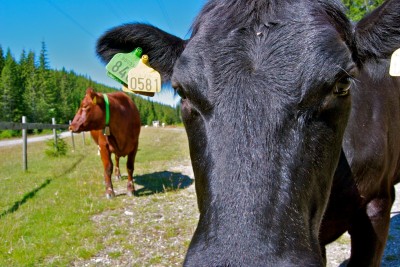Norwegians’ growing hunger for prime cuts of meat has led, after much hesitation, to a cut in the tariffs slapped on imported meat to protect Norwegian farmers. The hesitation arose because local commercial meat freezers are full of lower-grade Norwegian beef, which normally would forbid any imports until it gets consumed, but even the farmers and their meat cooperatives had to admit that the country faced a shortage of what consumers want.

Newspaper Dagens Næringsliv (DN) reported on the effects of tight regulation of the Norwegian meat market, which often has little to do with the laws of supply and demand. It comes just as the government, under new reform-minded politicians, is trying to ease agricultural regulations and protectionism in Norway.
The meat situation in Norway at present also illustrates rising affluence, and how Norwegian consumers have acquired a taste for prime cuts of higher quality meat for their grills or frying pans that can be prepared quickly. They’re no longer as willing to settle for the far-from-tender meat or ground meat often sold in local grocery stores that stems from retired dairy cattle. There’s also been less demand for the cuts of meat that take longer to prepare, like that used for pot roast or stews, and now it’s harder to find in the stores. “It’s been turned into ground meat,” Even Nordahl, marketing chief at the state meat council, told DN. “The price difference between meat used for boiling and meat used for frying or grilling has been too little.”
As a result, storage supplies of the lower-grade meat have built up, not least because producers don’t want to lower prices for it. In a classic example of how food production and prices in Norway are set by regulators and not by the laws of supply and demand, dairy cattle have been slaughtered for their lower-grade meat that no one wants, since farmers can still demand to be paid for it themselves. The unwanted meat then fills up the storage lockers while the market faces a shortage of the entrecote or filet that’s most in demand.
Temporary tariff relief
So, reported DN, the regulators reluctantly decided to lower tariffs on imported beef from NOK 66.40 per kilo (around USD 11 per kilo, or USD 5 per pound) to NOK 24.50 from next week: April 28 through Sunday May 25. Even though there are around 1,300 tons of frozen meat in storage, better cuts of meat will be allowed into the Norwegian market to prevent the sort of butter shortage the country experienced a few years ago.
“There’s strong demand for beef and filet heading into summer,” Jørn Rolfsen of the state agricultural management agency SLF (Statens landbruksforvaltning) told DN. “In order to secure enough for the market, we are reducing the tariffs. It’s important to get enough to ensure peace and quiet in the market.”
The move came after state meat industry association KLF (Kjøttbransjens landsforbund) and major grocery retailer NorgesGruppen, which owns large chains like Meny and Kiwi, “expressed concern” over meat supplies. SLF didn’t cut the tariffs, though, until after the farmers’ meat coop and so-called “market regulator” Nortura had agreed to allow the imports. Nortura’s goal is to prevent imported meat from competing with Norwegian meat, but in this case, there aren’t enough prime Norwegian cuts available.
No price relief
The imported meat is likely to be much cheaper than Norwegian meat, but Bård Gultvedt of NorgesGruppen told DN, though, that he can’t promise lower prices for consumers. “That because Nortura has just informed us they’re raising the prices on all beef cuts,” Gultvedt said. Nortura is still allowed to set prices and apparently doesn’t want Norwegian consumers to come to expect lower prices for meat in Norway.
Nor does Nortura seem willing to reduce prices on its large supply of stored meat, to stimulate demand for it. “It’s a challenge for them to use price mechanisms to get rid of the leftover meat, to create balance in the market,” Rolfsen told DN. He warned, though, that there will be no automatic extension of the reduced tariffs after May 25, even if the supplies of lower-grade meat remain high.
newsinenglish.no/Nina Berglund

